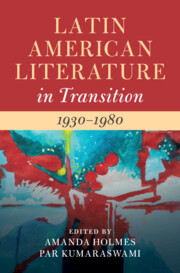Book contents
- Latin American Literature in Transition 1930–1980
- Latin American Literature in Transition
- Latin American Literature in Transition 1930–1980
- Copyright page
- Contents
- Contributors
- Introduction
- Part I War, Revolution, Dictatorship
- Part II Metropolis and Ruins
- Chapter 6 Economic, Political, and Ecological Disasters
- Chapter 7 Mexican Miracle Modernism
- Chapter 8 Crime and the City
- Part III Solidarity
- Part IV Aesthetics and Innovation
- Index
- References
Chapter 8 - Crime and the City
A Critical Walk through Latin American Crime Fiction and Urban Places
from Part II - Metropolis and Ruins
Published online by Cambridge University Press: 24 January 2023
- Latin American Literature in Transition 1930–1980
- Latin American Literature in Transition
- Latin American Literature in Transition 1930–1980
- Copyright page
- Contents
- Contributors
- Introduction
- Part I War, Revolution, Dictatorship
- Part II Metropolis and Ruins
- Chapter 6 Economic, Political, and Ecological Disasters
- Chapter 7 Mexican Miracle Modernism
- Chapter 8 Crime and the City
- Part III Solidarity
- Part IV Aesthetics and Innovation
- Index
- References
Summary
This chapter addresses the evolution of the crime fiction genre in Latin America by examining the relationship between three of the continent’s major cities and three historical moments. The following case studies chosen are: Buenos Aires in the stories of Seis problemas para Don Isidro Parodi (Six Problems for Don Isidro Parodi, 1942) by Jorge Luis Borges and Adolfo Bioy Casares; Havana in Armando Cristóbal Pérez’s novel La ronda de los rubies (The Ring of Rubies, 1973); and Mexico City in Días de combate (Days of Combat, 1976) by Paco Ignacio Taibo II. The chapter traces a textual trajectory from Borges and Bioy’s parodic games with the English models of mystery fiction to Taibo’s scathing national questioning of the Mexican neo-crime fiction, passing through Cristóbal’s politically committed and Cuban revolutionary crime fiction. That trajectory demonstrates the flexibility of the crime fiction genre, which has allowed it to branch out and adapt to the literary needs of different authors and contexts in the period between 1930 and 1980 in Latin American literature.
Keywords
- Type
- Chapter
- Information
- Latin American Literature in Transition 1930–1980 , pp. 131 - 146Publisher: Cambridge University PressPrint publication year: 2022



